Published Nov 5, 2022
Raising the Bar with Armin Shimerman
Everyone's favorite Ferengi reflects on 'Far Beyond the Stars.'
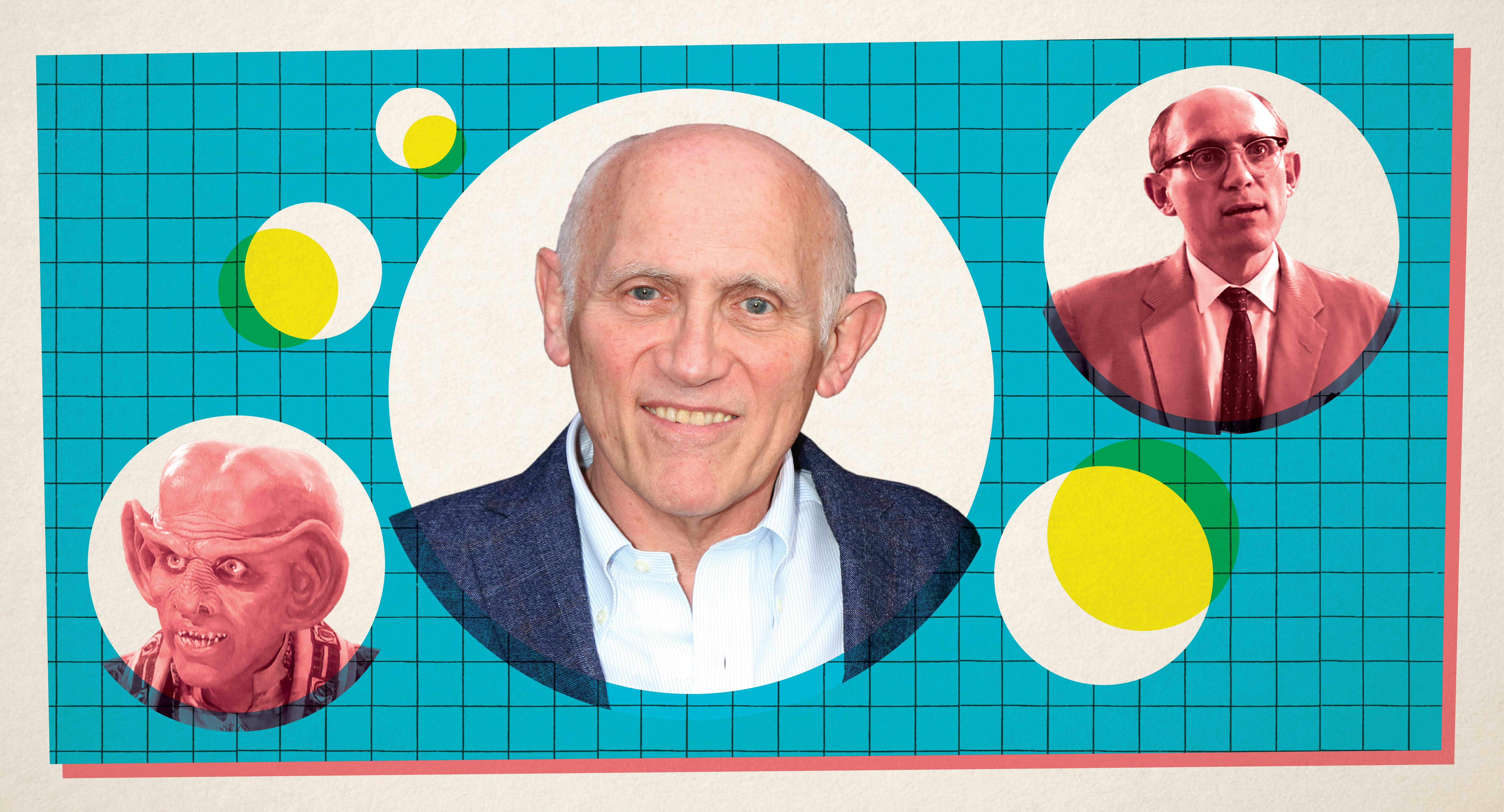
StarTrek.com
Best known to Star Trek fans for starring as Quark on Star Trek: Deep Space Nine, Armin Shimerman also brought the galaxy’s most famous Ferengi to life in guest spots on Star Trek: The Next Generation, Star Trek: Voyager, and in a deleted scene from Star Trek: Insurrection. Shimerman’s other Trek roles include an unrelated pair of Ferengi (Letek and DaiMon Bractor) and a Betazoid gift box who appeared in TNG’s first two seasons.
Although he brought Quark’s mischievous nature to life and helped establish the Ferengi’s misogynist and entrepreneurial qualities on DS9, Shimerman himself is quite a progressive, forward-thinking egalitarian in real-life. The respected actor connected with StarTrek.com to chat about how DS9 “raised the bar” for other television series through its discussion of social issues, its use of ongoing story arcs, and its ability to remain relevant to this day.

StarTrek.com
StarTrek.com: Thanks for your time, Armin. Many Star Trek fans support the Black Lives Matter movement and are rallying behind Avery Brooks’s iconic performance in the classic Deep Space Nine episode “Far Beyond the Stars.” How does it feel to know that people are drawing inspiration from DS9 for such a positive cause?
Armin Shimerman: Well, it’s very flattering. We knew it was a special episode when we were filming it. There are many things in life that should open our eyes and ears to the ugliness of racism. If that episode is one of the things that is doing that, then we are very proud of it.
StarTrek.com: “Far Beyond the Stars” was released in 1998, and the story itself was set in the 1950s. What is it like to know that the inequality faced by Avery Brooks’s character Benny Russell has still not been adequately addressed in 2020?
Armin Shimerman: It’s very troubling. Those of us of a certain age had assumed — and it was a wrong assumption — that we had gotten beyond that, but obviously we haven’t. I know that history is cyclical, and things repeat themselves over and over again. I also know that humanity learns from its mistakes, and we just have to be reminded again and again that racism is not the direction we want to go in. It is very troubling that we’re still that close to the sort of racism that was present in the 1950s. It’s different of course, it may or may not be as overt as it was in the ‘50s, but it doesn’t make it any less ugly.
I’m very grateful for the fact that everybody has a cell phone in the 21st Century, so we’re seeing pictures of things that many white people were only told about in the 1950s. The things that African-Americans had experienced firsthand. Now, by seeing pictures of the actual reality that is happening, I think we are galvanized. Hopefully, this way we will never forget.
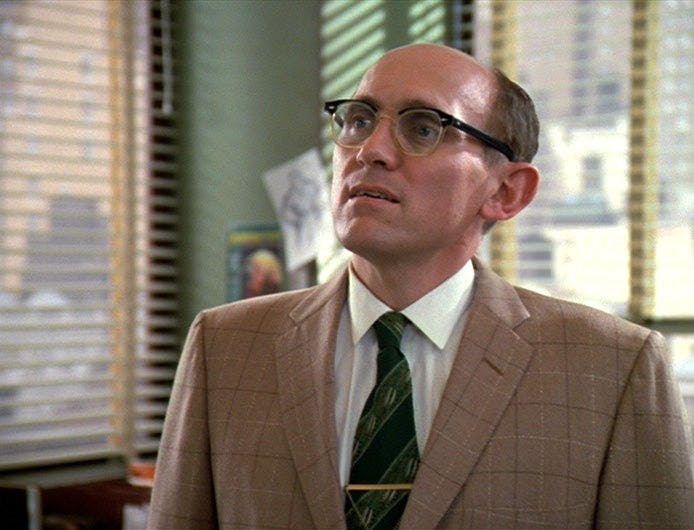
StarTrek.com
StarTrek.com: You mentioned that the cast believed “Far Beyond the Stars” would be a particularly noteworthy episode when you filmed it. What prompted that belief?
Armin Shimerman: Well, certainly the topic of racism and the inequality faced by African-Americans were foremost in our minds. There are lots of things about that episode that I’m particularly fond of, but dealing with racism was key.
All of us had tangentially experienced racism in one form or another. We were a show made up of many minorities. This particular episode was about racism towards African-Americans, but we had a Middle Eastern actor in our midst, Jewish actors… all minorities who had been affected by a type of racism. Avery has always been an enormous exponent for Black equality. For us to be doing this episode with him directing it, we knew this was a project that was very special to him. So we were very happy to do it.
StarTrek.com: Are there any other DS9 episodes that you believe contain messages that are especially relevant at the moment?
Armin Shimerman: Most of Star Trek, whether it’s our show or the other shows, was intended to be a metaphor for social evils. In Gene Roddenberry’s first show [The Original Series], every episode was addressing some social inequality, racism being one of them. “Let That Be Your Last Battlefield” with Frank Gorshin was one of the most powerful episodes of that series. Two sets of races were living on one planet, and their faces were each divided between white and black. One had black on the right side of their face, the other had white on the right side. It made no sense that one race should dominate over another simply because the colors were reversed. I remember being enormously affected by that episode as a young man.
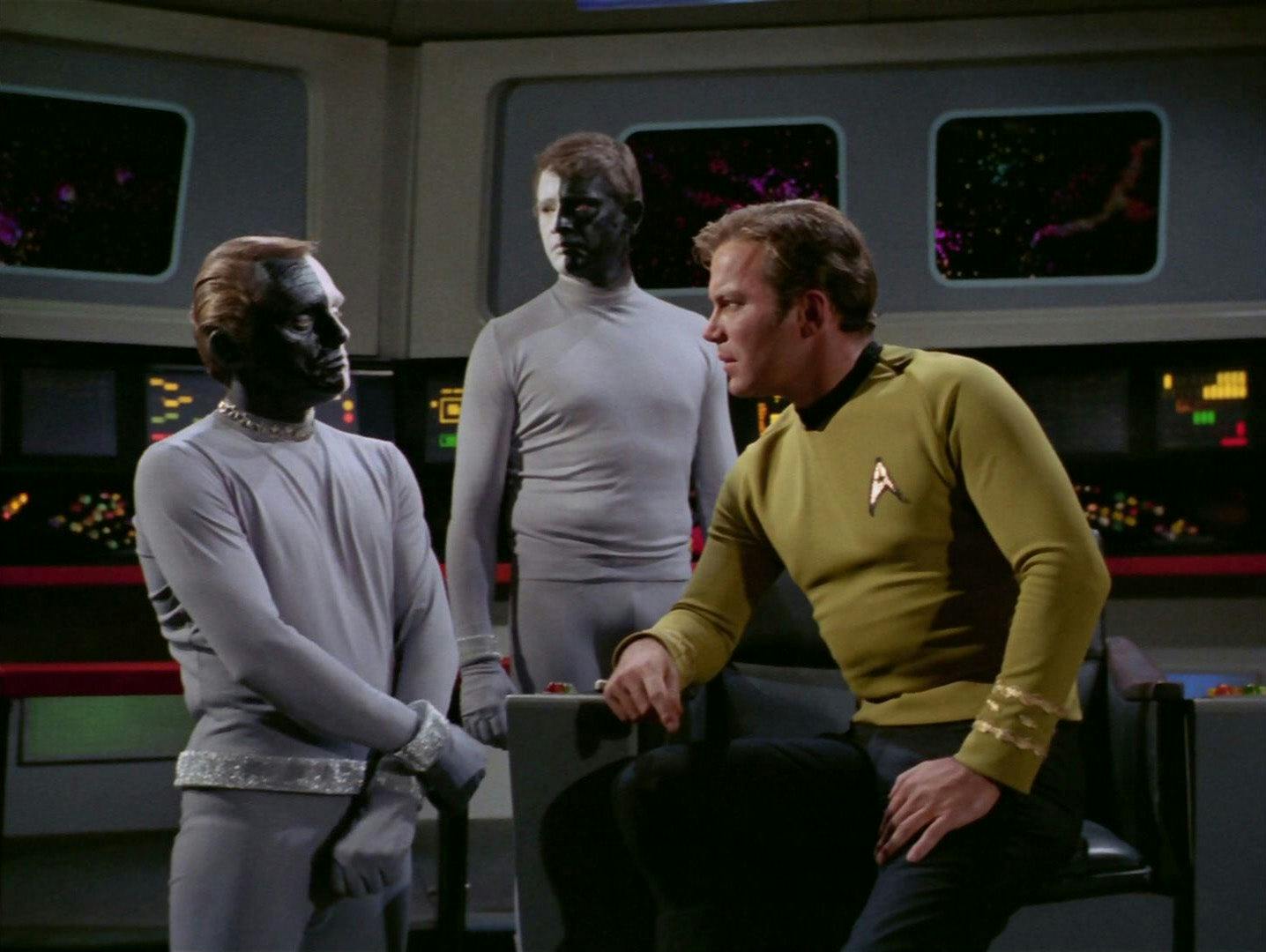
All the episodes from the various series almost always had some element of addressing social injustice. Star Trek never expected to give the answers; that was beyond our capability. It did raise questions. If a family watched the show together, as they often did, and talked about the issues after the show was over, then I think the franchise should be applauded for that.
StarTrek.com: Considering how society has progressed in some ways and regressed in others, are there social issues that you wish you had been able to deal with DS9?
Armin Shimerman: Well, we didn’t deal so much with LGBTQ issues as much as we perhaps could have. We did have some episodes, but I think we could have dealt with that more. I also think we could have dealt with issues surrounding people who required wheelchairs. I wish we had done more about that. In the original script for Deep Space Nine, we had a character who was confined to a wheelchair. They scrapped that idea due to the technical difficulties that would have been involved in getting the character around our multi-level set. We did go back and do the episode “Melora,” where the character was a guest star as opposed to a series regular. I wish we had done more of those episodes, as well.
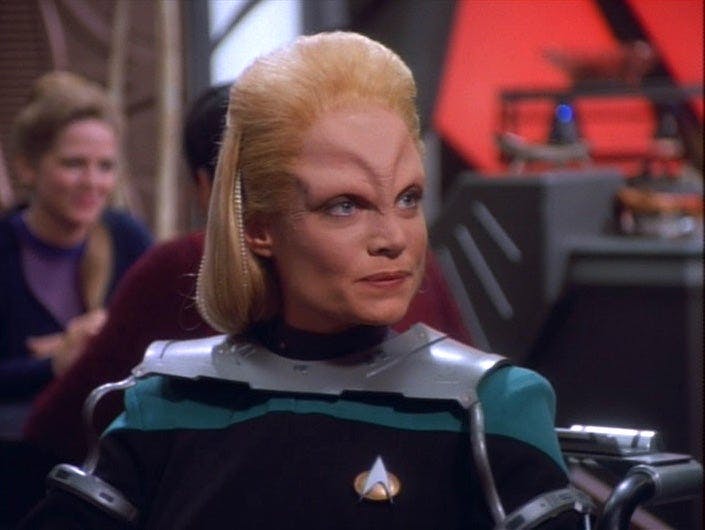
StarTrek.com
I must say, our writers did a very good job of addressing social inequalities throughout Deep Space Nine’s seven years and across the other shows too. Racism was woven into the fabric of our show, because Deep Space Nine was the show with the most aliens on it. Certainly, the other Star Trek series traveled from planet to planet and addressed a new race each week. However, because we had so many aliens all living together in a relatively small space, the question of how these strangers lived together was always paramount in our show.
StarTrek.com: If you could choose one scene that featured Quark to show to others and use as a teaching tool to benefit humanity, what would it be?
Armin Shimerman: In the second season, there was an episode called “The Jem’Hadar.” Up until that point, Quark was primarily a wheeler-dealer, sort of a nefarious shady character. We weren’t particularly fond of his morality. In that episode, Quark stands up to Sisko and claims the Ferengi are better than humans because they didn’t experience slavery or go through racial inequalities. I think this was the first time that we saw that this alien character had his own morality and demonstrated his own form of humanity.
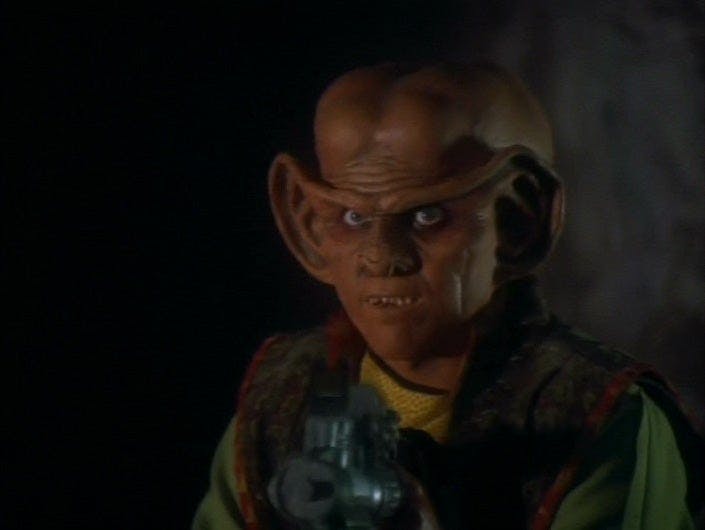
StarTrek.com
StarTrek.com: In addition to its social commentary, DS9 helped to pioneer the interconnected and ongoing story arcs that have become so popular in Star Trek: Discovery, Star Trek: Picard, and many other contemporary series. How did you feel about the way DS9 blended episodic storytelling with storylines that occasionally took years to play out?
Armin Shimerman: To be honest, it didn’t really affect me as an actor. My job was to fulfill whatever the character needed to do on any particular episode. The longer arcs that the writers were writing were out of my purview. I was aware of them, but I didn’t really have a point-of-view on that. I’m enormously grateful for those arcs, because I believe they make for better stories. That must be true, because most television shows now follow that example.
As The Next Generation was, our show was primarily planned to be sold to syndication. The syndicates like standalone episodes where the viewer can see an episode and not get lost if they haven’t watched the previous ones. The DS9 writers decided not to follow that course. I heard that Ira Steven Behr, Michael Piller, and Rick Berman all took a lot of grief for it.
The higher-ups wanted standalone episodes, and Ira wasn’t doing that. There was negative feedback, because people who missed a couple of episodes would be lost. It took a lot of gumption for our writers to stand up to “the suits” and tell them that this was how they wanted to write the show, and history proved them right.
StarTrek.com: On a lighter note, a Quark’s Bar appeared in the background during the Picard episode “Stardust City Rag.” A character also mentioned Quark in dialogue. What was your reaction when you learned that Quark’s legacy has endured?
Armin Shimerman: I was enormously flattered to be remembered as an integral part of the Star Trek mythology after 25 years. I was particularly annoyed [laughs] at the fact that Jonathan Frakes, who directed that episode and is a close friend of mine, never told me that they had done that in that episode [laughs].
Referencing Quark is a tribute, not only to me, but also to the writers who created a character who would be recognized and acknowledged 25 years later. They simply said “Quark,” and they expected you to know who Quark was. They didn’t give you any backstory, they simply said the name and put it up in lights. They expected you to know him, just as if they would have put “Spock” up in lights.
It’s nice to know that Quark’s legacy lives on. I hope that they continue to mention Quark every now and then on Picard, and I would be very flattered to come back and do an episode or two if the powers-that-be asked me.
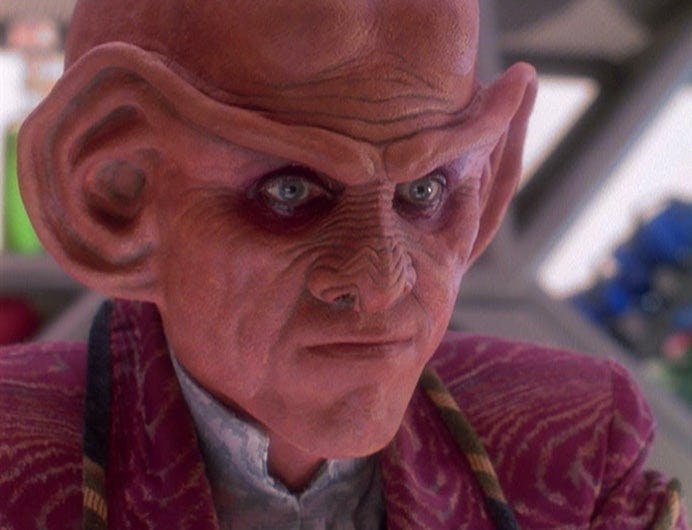
StarTrek.com
StarTrek.com: Despite the current COVID-19 situation, you’ve managed to keep very busy while social distancing. Are there any upcoming projects that you can share with us?
Armin Shimerman: I have sold three books to a publisher, and the first should come out sometime in the fall. My primary project has been working on rewrites and editorial suggestions in order to make the books that much better. I have been writing, and writing, and rewriting, and writing… my days have been either filled up with that or doing research so that I can do the rewrites.
Right now, our entire television and film industry has been shut down. I’m not aware of any production that is shooting anywhere at the moment, so doing a project on film is out of the question until COVID-19 is no longer a threat. Both the studios and the production companies are agreeing with the union about the need to protect the actors and anybody involved on set.
I’m very thankful for the people who saw that I was teaching Shakespeare online. I’ve done about a half dozen classes so far, and I know a lot of the people probably came due to their familiarity with my work on Star Trek and Buffy the Vampire Slayer. I’ll be doing a couple more of those, so people can be on the lookout for that. I’m also involved in Virtual Trek Con, which is going to be done in Aron Eisenberg’s honor from July 15 to July 20.
Writing, teaching, and virtual conventions have taken up a great deal of my time. I hope everyone is safe. I hope everyone is obeying the shelter-in-place orders and wearing their masks. Our curve hasn’t flattened, and I hope people will realize that they are wearing a mask to protect themselves and to protect others. Star Trek teaches us that we are all in this together and that we need to work as a unit. You can’t just think of your individual freedoms, you have to think about how your individual freedoms are affecting the lives, the livelihoods, and the health of other people.
Star Trek Supports Black Lives Matter
This article was originally published on July 10, 2020.
Jay Stobie (he/him) is a freelance writer who contributes articles to the official Star Trek website and Star Trek Magazine, as well as to Star Wars Insider and the official Star Wars website. Jay also serves as a part-time assistant and consultant advising many actors and creatives who work on his favorite sci-fi shows and films. He can be found on Twitter and Instagram at @StobiesGalaxy.
Star Trek: Picard streams exclusively on Paramount+ in the U.S. and is distributed concurrently by Paramount Global Distribution Group on Amazon Prime Video in more than 200 countries and territories. In Canada, it airs on Bell Media’s CTV Sci-Fi Channel and streams on Crave.
Stay tuned to StarTrek.com for more details! And be sure to follow @StarTrek on Facebook, Twitter, and Instagram.

